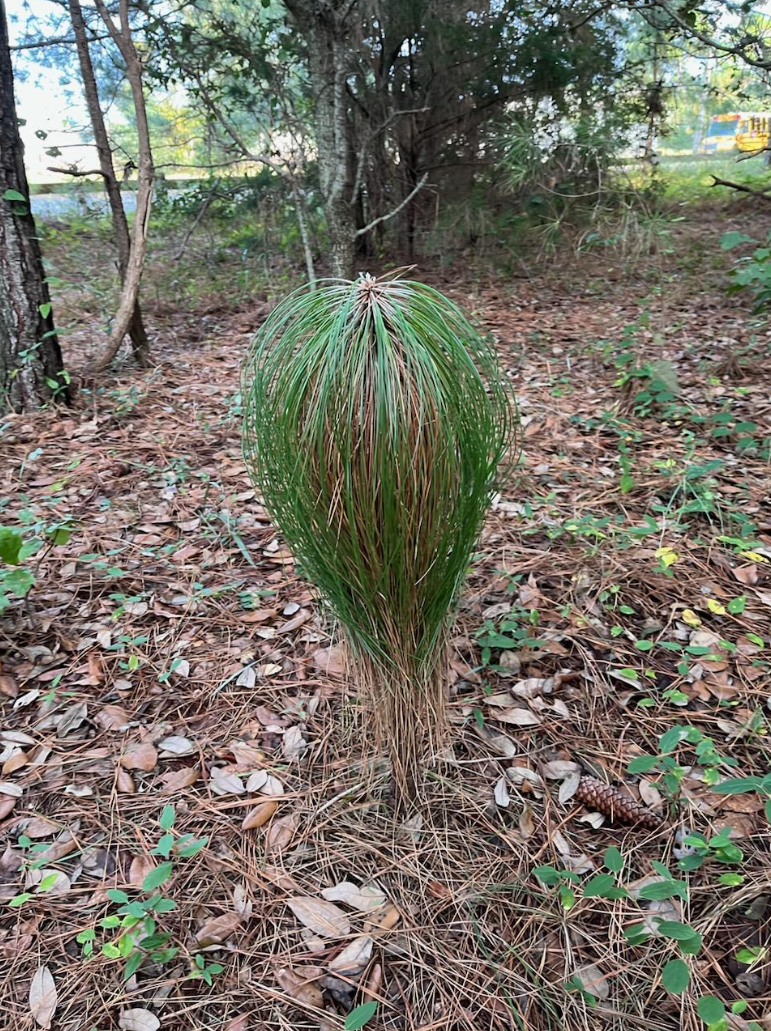
By Mary Reid Barrow
Hello, little longleaf pine!
How did you make it up to the shores of Pleasure House Creek?
Is there a Johnny Appleseed of longleaf pines, spreading seeds of your kin around the neighborhood?
Mike Jones photographed this longleaf in one stage of its up-tree-like growth pattern in a wooded area along Pleasure House Creek off Shore Drive.
Its almost perfect hairdo is a sign of what I might call a teenaged longleaf pine.
Longleaf pines begin life looking as little like a tree as possible, more like a clump of grass. In a few years, they develop a small stem with a plume of “grass” on top, as in the photo. Sometimes this is called its “bottle brush” stage.
In a few more years, they become a “real” tree. They are called longleaf pines because their needles can be more than a foot long.
Though they have twisted branches, longleaf pines grow straight sturdy trunks. Because of that strong wood, they were logged heavily by Virginia shipbuilders back in the days of wooden ships.
Until they were about logged out of existence, longleaf pines were the predominant pine in our sandy soil here in southeastern Virginia. This is hard to believe with the number of loblolly pines all around us now.
Today efforts are underway to restore the longleaf in this area of Virginia. Norfolk Botanical Garden has planted a stand of them in a part of the garden that’s easily visible from the walking trail where you can see their odd growth stages.
Theresa Augustin, Vice President of Education at the garden, wondered if the young pine in the photo didn’t need a little more sun. Perhaps its perfect head of hair would be more of mophead in a sunnier spot, she suggested.
Virginia’s Department of Conservation and Natural Resources also has successfully re-introduced the tree to some areas in Sussex County in the past several years.
And it would be fun to know how this lone pine ended up off Shore Drive and if anybody is introducing the trees around Virginia Beach.